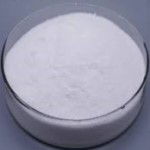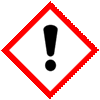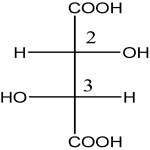CAS Number 87-69-4, Tartaric Acid USP NF BP Ph Eur Analytical Reagent FCC Food Grade Manufacturers Exporters







CAS Number 87-69-4, Tartaric Acid Manufacturer Exporter
For Properties Specifications of Tartaric Acid Click Properties, Specifications of Tartaric Acid Manufacturer.
For Uses of Tartaric Acid Click Uses of Tartaric Acid Manufacturer.
For For SDS MSDS Sheet of Tartaric Acid Click SDS Safety Data Sheet MSDS Sheet of Tartaric Acid Manufacturer.
The Properties and Specifications of Tartaric Acid:
Tartaric Acid USP NF Grade Specifications
C4H6O6 -- 150.09
Butanedioic acid, 2,3-dihydroxy-; Butanedioic acid, 2,3-dihydroxy-, [R-(R*,R*)]-.
Tartaric acid; L -(+)-Tartaric acid CAS 526-83-0 and CAS 87-69-4
Tartaric Acid, dried over phosphorus pentoxide for 3 hours, contains not less than 99.7 percent and not more than 100.5 percent of C4H6O6.
Identification:
A: It responds to the tests for Tartrate.
B: When ignited, it gradually decomposes, emitting an odor resembling that of burning sugar
(distinction from citric acid).
Specific rotation: between +12.0 and +13.0 .
Test solution: 200 mg per mL, in water.
Loss on drying: Dry it over phosphorus pentoxide for 3 hours: it loses not more than 0.5% of its weight.
Residue on ignition: not more than 0.1%.
Limit of oxalate: Nearly neutralize 10 mL of a solution of it (1 in 10) with 6 N ammonium hydroxide, and add 10 mL of calcium sulfate TS: no turbidity is produced.
Sulfate: To 10 mL of a solution (1 in 100) add 3 drops of hydrochloric acid and 1 mL of barium chloride: no turbidity is produced.
Heavy metals: 0.001%.
Assay: Place about 2 g of Tartaric Acid, previously dried and accurately weighed, in a conical flask. Dissolve it in 40 mL of water, add PhPh TS, and titrate with 1 N sodium hydroxide VS. Each mL of 1 N sodium hydroxide is equivalent to 75.04 mg of C4H6O6.
Tartaric Acid BP Ph Eur Grade Specifications
C4H6O6 --- 150.1--- CAS 87-69-4
Ph Eur
DEFINITION
(2R,3R)-2,3-Dihydroxybutanedioic acid.
Content: 99.5 per cent to 101.0 per cent (dried substance).
CHARACTERS
Appearance: White or almost white, crystalline powder or colourless crystals.
Solubility: Very soluble in water, freely soluble in ethanol (96 per cent).
IDENTIFICATION
A. Solution S (see Tests) is strongly acid.
B. It gives the reactions of tartrates.
TESTS
Solution S: Dissolve 5.0 g in distilled water and dilute to 50 ml with the same solvent.
Appearance of solution: Solution S is clear and not more intensely coloured than reference solution.
Specific optical rotation: + 12.0 to + 12.8 (dried substance)
Oxalic acid: Maximum 350 ppm, calculated as anhydrous oxalic acid.
Chlorides: Maximum 100 ppm.
Sulphates: Maximum 150 ppm.
Calcium: Maximum 200 ppm.
Heavy metals: Maximum 10 ppm.
Loss on drying: Maximum 0.2 per cent, determined on 1.000 g by drying in an oven at 105C
Sulphated ash: Maximum 0.1 per cent, determined on 1.0 g.
Tartaric Acid FCC Food Grade Specifications
L(+)-Tartaric Acid
C4H6O6 Formula wt 150.09
CAS [87-69-4
FEMA: 3044
DESCRIPTION
Tartaric Acid occurs as colorless or translucent crystals or as a white, fine to granular, crystalline powder. It is stable in air. One gram dissolves in 0.8 mL of water at 25C, in about 0.5 mL of boiling water, and in about 3 mL of alcohol. Its solutions are dextrorotatory.
Function: Acidifier; sequestrant; flavoring agent.
REQUIREMENTS
Identification :A sample solution gives positive tests for Tartrate.
Assay: Not less than 99.7% and not more than 100.5% of C4H6O6 after drying.
Lead: Not more than 2 mg/kg.
Loss on Drying: Not more than 0.5%.
Optical (Specific) Rotation: Between +12.0° and +13.0°.
Oxalate: Passes test.
Residue on Ignition: Not more than 0.05%.
Sulfate: Passes test.
Tartaric Acid Analytical Reagent Grade Specifications
2,3-Dihydroxybutanedioic Acid
HOOC(CHOH)2COOH
Formula Wt 150.0
CAS Number 87-69-4
REQUIREMENTS
Assay: Not less than 99.0%
MAXIMUM ALLOWABLE
Insoluble matter: 0.005%
Residue after ignition: 0.02%
Chloride (Cl): 0.001%
Oxalate (C2O4): Passes test
Phosphate (PO4): 0.001%
Sulfur compounds (as SO4): 0.002%
Heavy metals (as Pb): 5 ppm
Iron (Fe): 5 ppm.
The Uses of Tartaric Acid:
It is used in food additives. It is used in many drugs. It is used as a flavouring agent. It is used as a dusting powder on gloves.Tartaric acid is often used as an acidulant in grape- and lime-flavored beverages, gelatin desserts, jams, jellies, and hard sour confectionery. It is used to improve the taste of oral medications. It is used to chelate metal ions such as magnesium and calcium. It is used in recipes as a leavening agent. Industrial uses for tartaric acid include within the gold and silver plating process, cleaning and polishing metals, tanning leather, etc.
The MSDS-SDS Hazard Statement of aaa:
Tartaric Acid SDS, Safety Data Sheet
MSDS Sheet, Material Safety Data Sheet 31-Jan-23
1. Product Identification
Product Name & Other Names: Tartaric Acid or 2,3-Dihydroxybutanedioic acid
CAS No.: 87-69-4
EINECS EC Number: 201-766-0
Molecular Formula: C4H6O6
Molecular Weight: 150.1
Relevant uses and uses advised against (if any): Industrial Manufacturing.
2. Hazards Identification
GHS, Globally Harmonized System Classification in accordance with 29 CFR 1910
Classification according to Regulation (EC) No 1272/2008
Skin irritation Category 2, H315
Serious eye damage/eye irritation Category 2A, H319
Specific target organ toxicity - single exposure, Respiratory system. Category 3, H335
Labelling according Regulation (EC) No 1272/2008
GHS Label Elements  Irritant |
Signal Words: Warning
Hazard statements:
H315: Causes skin irritation.
H319: Causes serious eye irritation.
H335: May cause respiratory irritation.
Precautionary statements:
P264: Wash … thoroughly after handling.
P280: Wear protective gloves/protective clothing/eye protection/face protection.
P302+P352: IF ON SKIN: Wash with plenty of soap and water.
P305+P351+P338: IF IN EYES: Rinse cautiously with water for several minutes. Remove contact lenses, if present and easy to do. Continue rinsing.
P332+P313: If skin irritation occurs: Get medical advice/attention.
P337+P313: If eye irritation persists: Get medical advice/ attention.
3. Composition/Information on Ingredients
Product Name & Other Names: Tartaric Acid or 2,3-Dihydroxybutanedioic acid
CAS No.: 87-69-4
EINECS EC Number: 201-766-0
4. First Aid Measures
Always seek medical attention after first aid measures are provided.
Inhalation: If inhaled, remove to fresh air. If not breathing, give artificial respiration. If breathing is difficult, give oxygen and get medical attention immediately.
Ingestion: Never give anything by mouth to an unconscious person. Get medical attention.
Skin Contact: Immediately flush skin with plenty of water for at least 15 minutes while removing contaminated clothing and shoes. Get medical attention. Wash clothing and shoes before reuse.
Eye Contact: Immediately flush eyes with plenty of water for at least 15 minutes, lifting lower and upper eyelids occasionally. Get medical attention immediately.
5. Fire Fighting Measures
Fire: As with most organic solids, fire is possible at elevated temperatures or by contact with an ignition source.
Explosion: Fine dust dispersed in air in sufficient concentrations, and in the presence of an ignition source is a potential dust explosion hazard.
Fire Extinguishing Media: Water spray, dry chemical, alcohol foam, or carbon dioxide.
Flash point: 150C (302F) - closed cup.
Special Information: In the event of a fire, wear full protective clothing and NIOSH-approved self-contained breathing apparatus with full face piece operated in the pressure demand or other positive pressure mode. At high temperatures under fire conditions, it may produce toxic or irritating fumes. Fire-extinguishing work is done from the windward and the suitable fire-extinguishing method according to the surrounding situation is used.
6. Accidental Release Measures
Personal precautions, protective equipment, and emergency procedures: Avoid breathing dust/fumes/gas/mist/vapors/spray. Use individual protective equipment (waterproof boots, suitable protective clothing, safety glasses, etc.). Do not approach facing the wind.
Environmental precautions: Do not let the product enter drains, soil, or water sources.
Methods and materials used for containment Cleanup procedures and Storage: Do not inhale dust, vapors, mist, or gas. Avoid dust formation. Contain spilled material. Cover with an inert, non-combustible absorbent material, (e.g. sand, earth, diatomaceous earth, vermiculite). Use a shovel to put the material into a convenient waste disposal container.
7. Handling and Storage
Precautions for safe handling: Apply according to good manufacturing and industrial hygiene practices. Ensure proper ventilation. In case of insufficient ventilation, wear suitable respiratory equipment. Wash thoroughly after handling. Do not drink, eat, or smoke while handling. Avoid contact with skin, eyes, and clothing. Minimize dust generation. Avoid breathing dust/fumes/gas/mist/vapors/spray. Keep container tightly closed. Avoid ingestion and inhalation. Use individual protective equipment (waterproof boots, suitable protective clothing, safety glasses, etc.).
Conditions for safe storage, including any incompatibilities: Store in cool, dry, and ventilated area away from heat sources and protected from sunlight in tightly closed original container. Keep air contact to a minimum. Store protected from heat, sparks and ignition sources and incompatible materials. Avoid contact with skin and eyes. Avoid inhalation of dust/mist/vapor. Do not store with incompatible materials like strong oxidizing agents, bases, sodium nitrate, sodium nitrite, nitric acid. Avoid dust formation and control ignition sources. Employ grounding, venting and explosion relief provisions in accord with accepted engineering practices in any process capable of generating dust and/or static electricity.
8. Exposure Controls/Personal Protection
Airborne Exposure Limits: None established.
Ventilation System: A system of local and/or general exhaust is recommended to keep employee exposures as low as possible.
Personal Respirators (NIOSH Approved): For conditions of use where exposure to dust or mist is apparent and engineering controls are not feasible, a particulate respirator (NIOSH type N95 or better filters) may be worn.
Skin Protection: Wear impervious protective clothing, including boots, gloves, lab coat, apron or coveralls, as appropriate, to prevent skin contact.
Eye Protection: Use chemical safety goggles and/or full face shield where dusting or splashing of solutions is possible. Maintain eye wash fountain and quick-drench facilities in work area.
Other Control Measures: Maintain good housekeeping in work area. Handle in accordance with good industrial hygiene and safety practice.
9. Physical and Chemical Properties
Appearance: White crystals or powder.
Odor: Not available.
Odor threshold: Not available.
pH: 1.0 - 2 at 150 g/l at 25C (77F).
Relative density: Not available.
Melting Point: 170C - 172C (338F - 342F) - lit.
Initial boiling point and boiling range: Not available.
Flash point: Not available.
Auto-ignition temperature: Not available.
Decomposition temperature: Not available.
Upper/lower flammability or explosive limits: Not available.
Vapor pressure: Not available.
Vapor Density (Air=1): 5.18
Evaporation rate: Not available.
Flammability (solid, gas): Not available.
Partition coefficient: n-octanol/water: Not available.
Solubility: Soluble in water. 150 g/l at 20C (68F)
Viscosity: Not available.
10. Stability and Reactivity
Stability: Stable under ordinary conditions of use and storage.
Hazardous Decomposition Products: Carbon dioxide and carbon monoxide may form when heated to decomposition.
Hazardous Polymerization: Will not occur.
Incompatibilities: Strong oxidizers and bases, sodium nitrate, sodium nitrite, nitric acid.
Conditions to Avoid: Direct sunlight. Extremely high or low temperatures, Heat, dusting, and incompatibles.
11. Toxicological Information
LD50 oral rat: > 2000 mg/kg
LD50 dermal rat: > 2000 mg/kg
Lowest Published Lethal Dose LDLo, oral, rat: 7500 mg/kg
LD50 Intravenous - mouse - 485 mg/kg
Carcinogenicity: No component of this product present at levels greater than or equal to 0.1% is identified as possible or confirmed human carcinogen by IARC, ACGIH, OSHA and NTP.
Mutagenic Effects: Not available.
Developmental Toxicity: Not available.
Reproductive Effects: No information available.
12. Ecological Information
EC50 Daphnia 1: 93.31 mg/l 48 hr.
EC50 other aquatic organisms 1: 51.4 mg/l 72 hr.
Environmental Fate: Sufficient information is not available. When released into the soil, Tartaric Acid is expected to leach into groundwater. When released into the soil, this material is expected to biodegrade. When released into water, this material is expected to biodegrade. This material is not expected to significantly bio accumulate.
Persistence and Degradability: Unlikely to persist due to water solubility.
Mobility: Likely to be mobile due to water solubility.
Bioaccumulation/ Accumulation: Not expected to significantly bioaccumulate.
Results of PBT and vPvB assessment: No data available for assessment.
13. Disposal Considerations
Whatever cannot be saved for recovery or recycling should be managed in an appropriate and approved waste disposal facility.
14. Transport Information
DOT USA, TDG Canada & ADR/RID Europe: Not controlled.
IMDG/IMO: Not controlled.
IATA: Not controlled.
15. Regulatory Information
USA:
SARA 311/312 Hazards: Acute Health Hazard. See section 2.
California Prop. 65 Components: This product does not contain any chemicals known to State of California to cause cancer, birth defects, or any other reproductive harm.
Section 16 - Additional Information
Disclaimer:
*****************************
Our company provides this MSDS sheet in good faith but makes no representation as to its comprehensiveness or accuracy. This SDS sheet is intended only as a guide to the appropriate precautionary handling of the material by a properly trained person using this product. The above information has been compiled from various sources and has the possibility of discrepancy and being out-dated information. Individuals receiving the information must exercise their independent judgment and do further search in determining its appropriateness for a particular purpose. In no case shall our company be liable to loss or damages by the product user.
*****************************
Anmol Chemicals & Pharmaceuticals Pvt. Ltd. is an off-shoot of Anmol Chemicals Taloja. It is located in MIDC Taloja and it is manufacturing pharmaceutical grades of API, Excepients, Food grade and Reagent grade chemicals. Anmol Chemicals & Pharmaceuticals Pvt. Ltd. is a several decades old group of companies, engaged in manufacturing, supplying, distributing, wholesale supplies for actual users, retail or small pack supplies for research and development chemicals, fine and speciality chemicals, pharmaceutical excipients, mineral fortifiers in chemically pure, Analytical reagent grade, IP BP USP Ph Eur EP JP and other pharmaceutical grade monograph including FCC Food grade chemicals and Nutraceuticals, Mineral Fortifiers at best prices.

Tartaric Acid Structure
CAS Number 87-69-4, Tartaric Acid Manufacturer Exporter
ANMOL CHEMICALS & PHARMACEUTICALS Pvt. Ltd.
India, USA, Europe, UAE
TELEPHONE: +912223770100
Navi Mumbai, INDIA
e-mail: info(At the rate i.e. @)anmol.org
Copyright. 11-dec-24
We manufacture:
Glacial Acetic Acid Manufacturer
TBHQ Tertiary Butylhydroquinone

